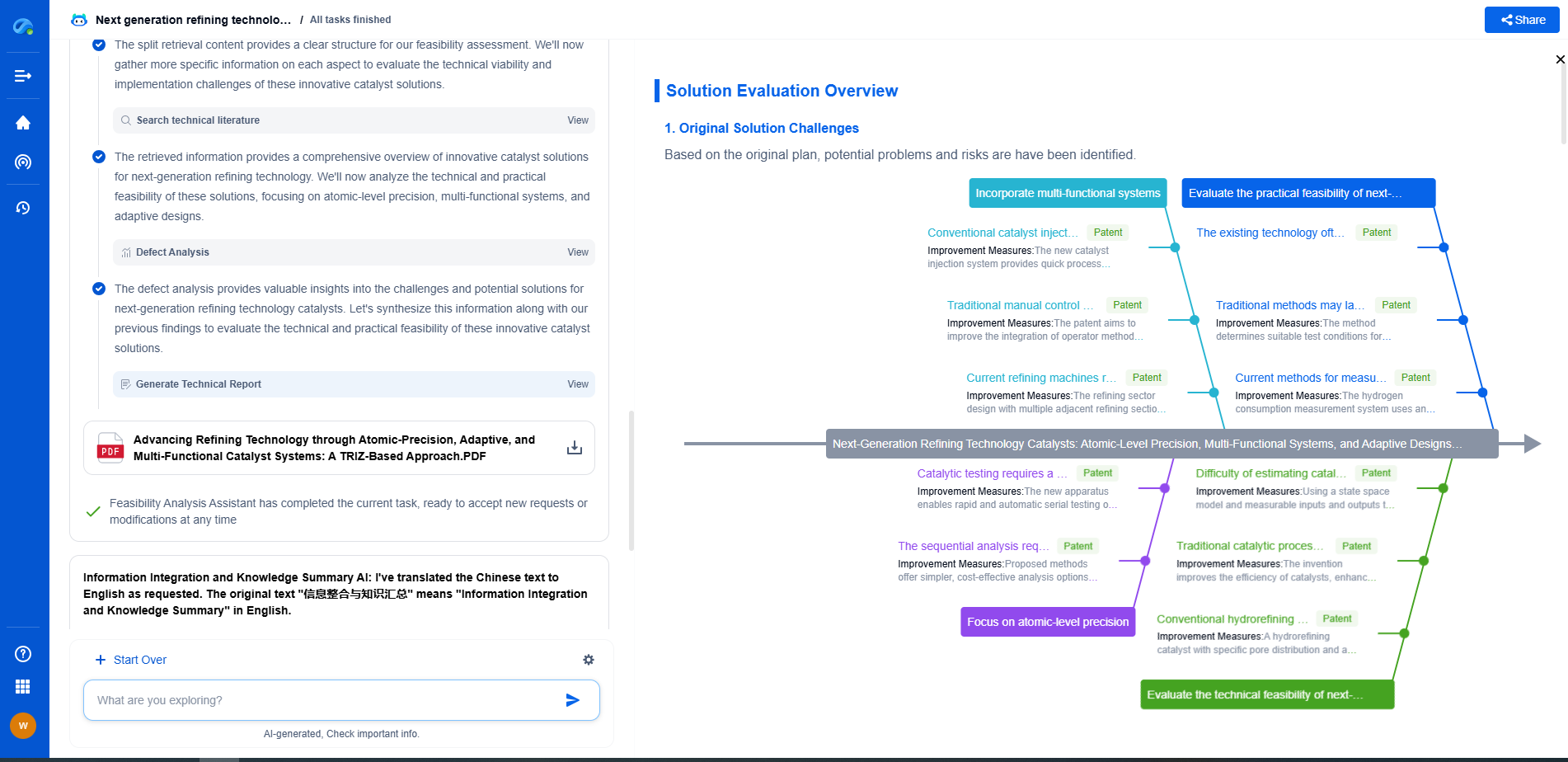What is the Role of Operational Amplifiers in Precision Measurement Circuits?
JUN 27, 2025 |
Operational amplifiers, often referred to as op-amps, are integral components in the realm of electronics, particularly in precision measurement circuits. These versatile and robust devices are used to amplify and process analog signals, making them indispensable in ensuring high accuracy and stability in various applications. Understanding their role in precision measurement circuits reveals how they enhance performance and reliability in diverse technological domains, from medical instrumentation to telecommunications.
Core Functionality of Operational Amplifiers
At the heart of an operational amplifier's function is its ability to perform mathematical operations, such as addition, subtraction, integration, and differentiation. However, when it comes to precision measurement circuits, the amplification of small signal voltages is of paramount importance. An op-amp is typically used to amplify differential signals, which are the difference between two input voltages, while rejecting any common-mode signals or noise that could compromise measurement accuracy.
High Input Impedance and Low Output Impedance
One of the key characteristics that make op-amps ideal for precision measurement is their high input impedance and low output impedance. High input impedance ensures that the op-amp does not significantly load down the input signal source, preserving signal integrity. On the other hand, low output impedance allows the op-amp to drive various loads without significant loss of signal quality. These attributes are crucial in applications requiring precise signal amplification and conditioning.
Minimizing Offset Voltage and Drift
In precision measurement, even a millivolt of offset can lead to substantial errors. Operational amplifiers are designed to minimize offset voltage, which is the voltage difference between the input terminals when the output is zero. Advanced op-amps come with features that minimize offset voltage drift over temperature and time, which is essential for maintaining accuracy in critical measurements. Zero-drift op-amps, for example, employ auto-zeroing techniques or chopper stabilization to virtually eliminate offset voltage, ensuring stable performance under varying environmental conditions.
Noise Reduction and Signal Filtering
Noise is an inevitable challenge in electronic circuits, and its impact on precision measurement cannot be overstated. Operational amplifiers play a significant role in attenuating noise through their differential amplification and filtering capabilities. By configuring op-amps in specific circuits, such as low-pass or band-pass filters, unwanted noise can be effectively reduced, allowing only the desired signal frequencies to pass through. This ensures that the measurement system provides accurate readings, free from external interferences.
Applications in Sensor Signal Conditioning
Precision measurement often involves interfacing with sensors that convert physical parameters into electrical signals. These sensor outputs are usually weak and require amplification and conditioning before further processing. Operational amplifiers serve as the perfect interface devices, offering the necessary gain, filtering, and impedance matching to ensure that the sensor signals are accurately represented. From strain gauges to thermocouples, op-amps are ubiquitous in ensuring that the information relayed from sensors is both precise and reliable.
Enhancing Stability with Feedback Networks
Feedback is a crucial aspect of operational amplifier circuits, as it significantly influences their performance characteristics. In precision measurement circuits, feedback networks are meticulously designed to enhance stability and linearity while minimizing distortion. Negative feedback, in particular, is employed to control the gain of the op-amp, reduce non-linearity, and improve bandwidth. This results in a more stable and predictable output, which is essential for applications where accuracy is non-negotiable.
Conclusion: The Indispensable Role of Op-Amps
In summary, operational amplifiers are fundamental components in precision measurement circuits due to their ability to amplify, filter, and stabilize signals with high accuracy. Their high input impedance, low output impedance, and advanced features for minimizing noise and offset voltages make them ideal for a wide range of applications. As technology continues to advance, op-amps will undoubtedly remain at the forefront of innovation in precision measurement, enabling the development of more sophisticated and reliable electronic systems.
Accelerate Electronic Circuit Innovation with AI-Powered Insights from Patsnap Eureka
The world of electronic circuits is evolving faster than ever—from high-speed analog signal processing to digital modulation systems, PLLs, oscillators, and cutting-edge power management ICs. For R&D engineers, IP professionals, and strategic decision-makers in this space, staying ahead of the curve means navigating a massive and rapidly growing landscape of patents, technical literature, and competitor moves.
Patsnap Eureka, our intelligent AI assistant built for R&D professionals in high-tech sectors, empowers you with real-time expert-level analysis, technology roadmap exploration, and strategic mapping of core patents—all within a seamless, user-friendly interface.
🚀 Experience the next level of innovation intelligence. Try Patsnap Eureka today and discover how AI can power your breakthroughs in electronic circuit design and strategy. Book a free trial or schedule a personalized demo now.
- R&D
- Intellectual Property
- Life Sciences
- Materials
- Tech Scout
- Unparalleled Data Quality
- Higher Quality Content
- 60% Fewer Hallucinations
Browse by: Latest US Patents, China's latest patents, Technical Efficacy Thesaurus, Application Domain, Technology Topic, Popular Technical Reports.
© 2025 PatSnap. All rights reserved.Legal|Privacy policy|Modern Slavery Act Transparency Statement|Sitemap|About US| Contact US: help@patsnap.com

